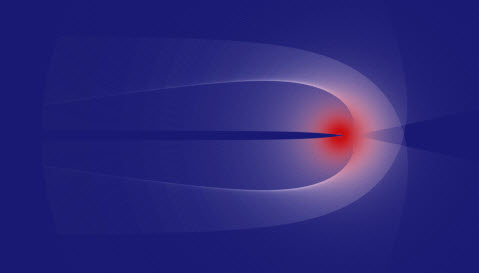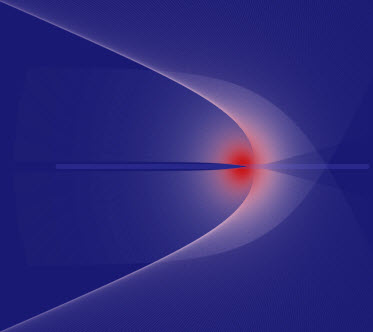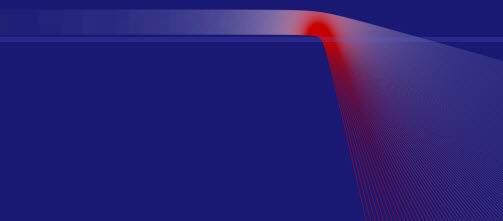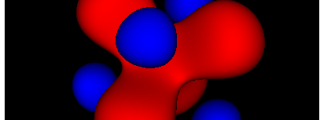In my last few posts, I’ve been trying to characterize different potentials through the shapes of their orbits (gravitational, harmonic, lorentz). In the middle of it, I came across a post on bad astronomy about gravitational slingshots. I figured it would be a perfect opportunity to use these images to show the effect in a different way.
To start, I’m sending a beam of particles directly towards the planet in question, just like my previous demos. This time I slowly increase the speed of the planet and the orbit shapes change accordingly. It was pretty hard to see what was going on with the first few renderings, so I started by increasing the intensity and color of the orbit with the speed of the particle. Things were starting to look better, but they didn’t really start to illuminate the dynamics until I subtracted off the initial velocity of the test particles and only showed particles that were moving faster than their initial speed.
This one shows the default case of a stationary target. The particles accelerate as they get close and then slow down to their initial speed as they move a way.
This is the first shot of a moving target. You can see there are now a few particles that are being shot back at a higher speed, extending past the first line of acceleration from the last image.
There are a few more features visible now as the speed picks up. Since these are lorentz potentials, you can see a more pronounced central core of paths that pass right by the target and are only slightly deflected. The same thing happens with particles further out, but there is a sweet spot that generates two beams. The faster the target moves, the less deflection is seen. With a slow target, the final trajectory is almost a 180, but the angle decreases more and more as the target speed increases, though the final boost in speed increases as well.
I wanted to finish up with one image that captured the gravitational result. There are many similarities, but some significant differences. The infinity at dead center means that there isn’t a max deflection angle like there is in the lorentz case. As you you approach dead center, there will always be a set of bound states. This leads to simpler images, and really those trajectories aren’t all that interesting as far as the slingshot goes. Hyperbolic orbits are the only ones that get launched somewhere.
Anyway I hope these images illustrate some of the features of this process. I’ve learned a lot putting them together, both about these processes, and how to illustrate them in a way that makes the physics visible to the naked eye.




